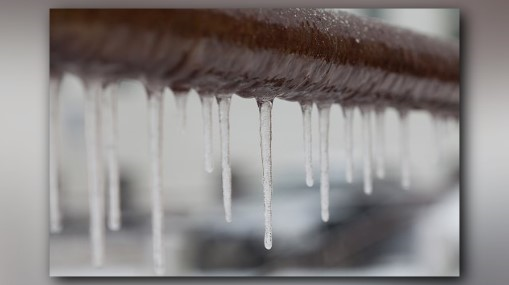Important Advice to Protect Against Frozen Plumbing in Winter
Important Advice to Protect Against Frozen Plumbing in Winter
Blog Article
We've discovered this post pertaining to How To Avoid Freezing Pipes below on the internet and thought it made good sense to talk about it with you on my blog.

Winter can ruin your plumbing, specifically by freezing pipes. Here's how to avoid it from happening and what to do if it does.
Introduction
As temperature levels drop, the danger of frozen pipes rises, potentially bring about expensive fixings and water damages. Comprehending how to prevent icy pipes is critical for homeowners in chilly environments.
Comprehending Frozen Pipelines
What triggers pipelines to ice up?
Pipes freeze when exposed to temperature levels listed below 32 ° F (0 ° C) for expanded durations. As water inside the pipes freezes, it broadens, putting pressure on the pipe wall surfaces and possibly creating them to burst.
Threats and problems
Frozen pipelines can result in supply of water disruptions, home damage, and pricey repair work. Burst pipelines can flooding homes and trigger substantial structural damage.
Signs of Frozen Piping
Determining icy pipelines early can prevent them from bursting.
Exactly how to recognize icy pipelines
Look for decreased water circulation from faucets, uncommon odors or sounds from pipelines, and visible frost on subjected pipelines.
Avoidance Tips
Protecting vulnerable pipelines
Cover pipelines in insulation sleeves or use heat tape to protect them from freezing temperature levels. Focus on pipelines in unheated or exterior locations of the home.
Heating methods
Maintain interior areas properly heated up, especially areas with pipes. Open closet doors to allow warm air to flow around pipes under sinks.
Securing Exterior Plumbing
Yard hoses and outside faucets
Detach and drain garden hose pipes before winter season. Mount frost-proof faucets or cover exterior taps with protected caps.
What to Do If Your Pipes Freeze
Immediate actions to take
If you think frozen pipelines, keep taps open to soothe stress as the ice melts. Make use of a hairdryer or towels soaked in hot water to thaw pipelines gradually.
Long-Term Solutions
Structural changes
Take into consideration rerouting pipelines far from exterior wall surfaces or unheated areas. Add additional insulation to attics, basements, and crawl spaces.
Updating insulation
Buy top quality insulation for pipes, attics, and wall surfaces. Appropriate insulation aids preserve consistent temperatures and reduces the danger of frozen pipelines.
Verdict
Stopping icy pipelines needs positive steps and fast feedbacks. By comprehending the causes, signs, and safety nets, home owners can secure their pipes throughout winter.
5 Ways to Prevent Frozen Pipes
Drain Outdoor Faucets and Disconnect Hoses
First, close the shut-off valve that controls the flow of water in the pipe to your outdoor faucet. Then, head outside to disconnect and drain your hose and open the outdoor faucet to allow the water to completely drain out of the line. Turn off the faucet when done. Finally, head back to the shut-off valve and drain the remaining water inside the pipe into a bucket or container. Additionally, if you have a home irrigation system, you should consider hiring an expert to clear the system of water each year.
Insulate Pipes
One of the best and most cost-effective methods for preventing frozen water pipes is to wrap your pipes with insulation. This is especially important for areas in your home that aren’t exposed to heat, such as an attic. We suggest using foam sleeves, which can typically be found at your local hardware store.
Keep Heat Running at 65
Your pipes are located inside your walls, and the temperature there is much colder than the rest of the house. To prevent your pipes from freezing, The Insurance Information Institute suggests that you keep your home heated to at least 65 degrees, even when traveling. You may want to invest in smart devices that can keep an eye on the temperature in your home while you’re away.
Leave Water Dripping
Moving water — even a small trickle — can prevent ice from forming inside your pipes. When freezing temps are imminent, start a drip of water from all faucets that serve exposed pipes. Leaving a few faucets running will also help relieve pressure inside the pipes and help prevent a rupture if the water inside freezes.
Open Cupboard Doors
Warm your kitchen and bathroom pipes by opening cupboards and vanities. You should also leave your interior doors ajar to help warm air circulate evenly throughout your home.

I stumbled upon that entry on How to Prevent Your Pipes From Freezing while surfing around the internet. Are you aware of anybody else who is sincerely interested in the topic? Why not promote it. We value reading our article about Winter Plumbing Precautions: Preventing Frozen Pipes.
Call Today Report this page